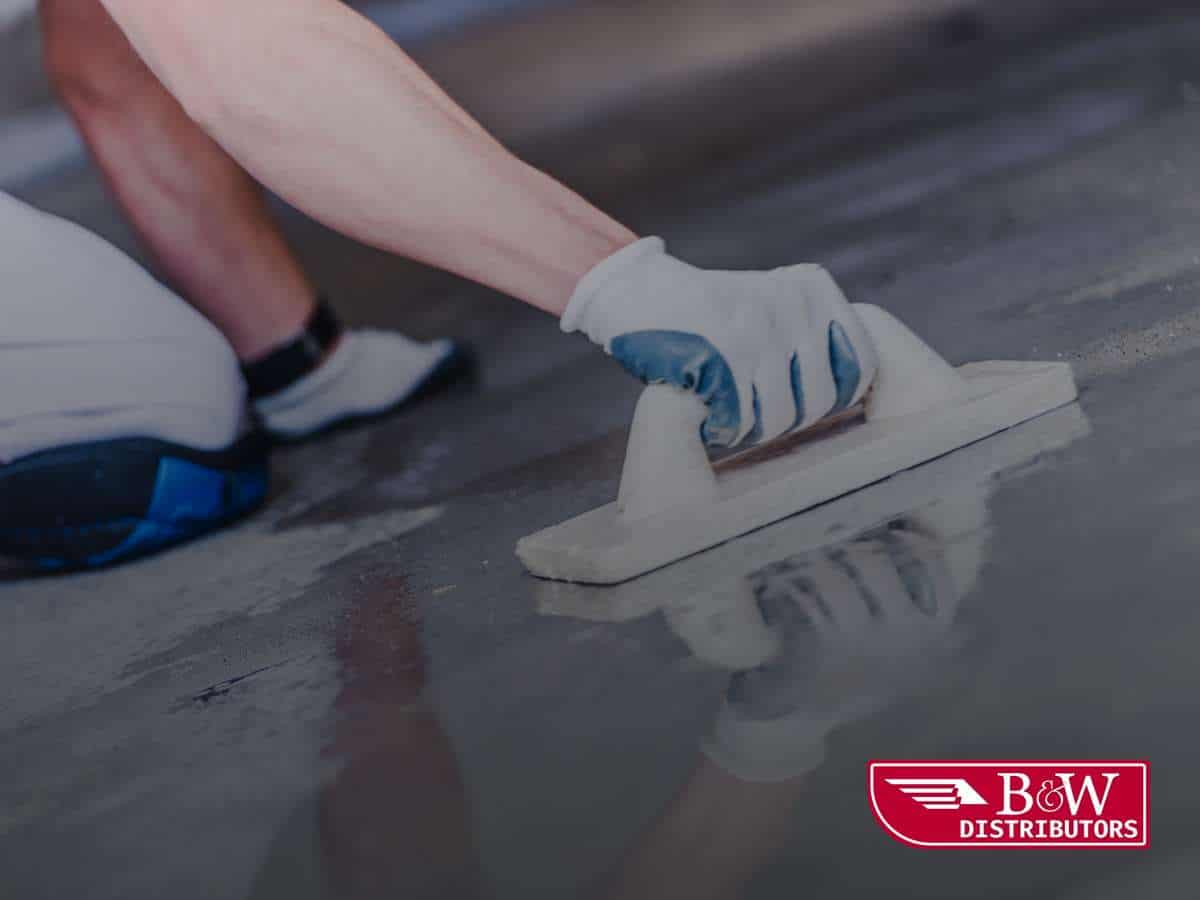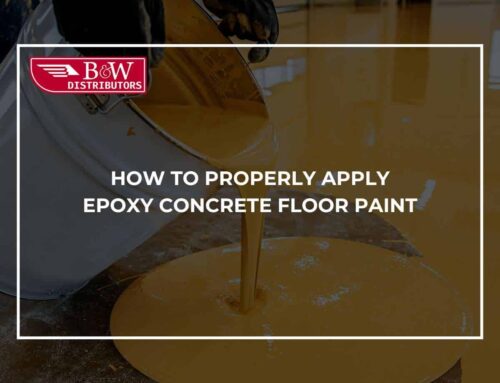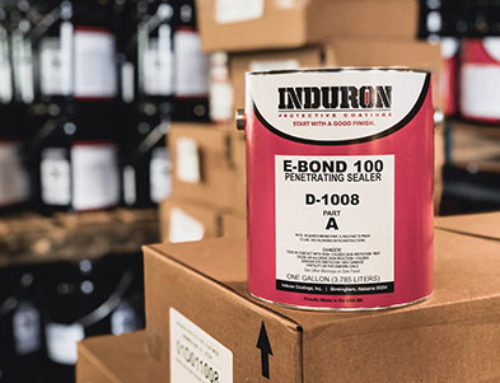Choosing The Right Concrete Coating For High Humidity Areas
Top Coating Systems For Optimal Protection In High Humidity & Moisture-Prone Areas
Humidity poses a serious threat to concrete surfaces, often causing gradual damage that goes unnoticed until it’s too late. In areas where moisture remains in the air throughout the year, issues like bubbling, discoloration, mold growth, and surface deterioration are unfortunately common. For this reason, the right coating plays a crucial role in preserving the integrity of the structure over time.
In this article, we’ll cover the key features to prioritize and explore which coating systems offer the most reliable performance in moisture-prone environments.

Why High Humidity Poses a Major Threat to Concrete Surfaces
What feels humid to one person may seem comfortable to another—but when it comes to concrete, the numbers speak for themselves. According to The Washington Post, dew points above 60°F are considered moderately humid, while anything over 65°F reaches high levels, and 70°F or more is classified as very high to extreme. In these conditions, the air retains enough moisture to create real challenges for concrete surfaces, even if there are no visible signs of water.
Concrete may appear solid, but it’s actually full of microscopic pores that absorb moisture from the environment. In humid climates, water vapor can move through the slab and become trapped inside, even when the surface seems dry. This internal moisture buildup can lead to a range of issues, including:
- Delamination of the coating
- Surface blistering or bubbling
- Mold and mildew growth
- Discoloration and staining
- Compromised structural integrity
Traditional coatings often fail under these conditions because they aren’t engineered to resist the constant upward pressure of moisture vapor within the concrete. That’s why choosing a system specifically designed for humid environments is essential for long-term performance.
Critical Features In Humidity-Resistant Coatings
The best way to ensure your coating holds up is to select products designed specifically for high-moisture environments. Here are the top attributes to look for:
1. Moisture Vapor Transmission (MVT) Resistance
High humidity means more water vapor trying to pass through the concrete. A proper coating must resist MVT to prevent bubbling and lifting from beneath the surface. Without this resistance, even the best-looking coatings can fail prematurely.
2. Water-Resistant or Waterproof Formulations
Coatings like polyurea and polyaspartic offer excellent water resistance. These materials prevent surface-level moisture from penetrating and disrupting the bond between the coating and concrete surface.
3. Flexibility
Concrete naturally expands and contracts with temperature and humidity shifts. Coatings that can move with the substrate—rather than cracking under pressure—perform better in challenging environments.
4. UV & Chemical Resistance
In outdoor settings, coatings also need to withstand UV rays and potential chemical exposure. Coatings that resist yellowing, fading, and degradation help preserve both appearance and function over time.
Top Concrete Coating Options for High Humidity & Moisture Environments
If you’re working in a high-humidity area, not all coatings are created equal. The following materials are consistently reliable in such conditions:
Polyurea Coatings
Polyurea coatings are highly regarded for their ability to withstand harsh conditions involving moisture and chemical exposure. Their unique formulation allows them to form a flexible, seamless barrier that adapts to the natural expansion and contraction of concrete, which is crucial in humid environments where vapor pressure can be significant.
This combination of flexibility and resistance offers several practical benefits, including:
- Excellent resistance to moisture vapor transmission (MVT), helping to prevent coating failure.
- Rapid curing times that reduce project downtime, even when humidity levels are high.
- Strong flexibility combined with impact resistance, allowing the coating to endure heavy foot or vehicle traffic.
- Suitability for demanding environments such as garages, warehouses, and exterior surfaces.
For professionals sourcing from an industrial coating supplier in the Southwest, polyurea is often the preferred option when facing the challenges of high humidity.
Polyaspartic Coatings
As a specialized form of polyurea, polyaspartic coatings share many performance characteristics but excel in applications where aesthetics and quick turnaround are equally important. Their ability to cure very rapidly makes them ideal for projects requiring minimal downtime.
Moreover, Polyaspartics offer enhanced UV stability and maintain their gloss and color vibrancy even after prolonged exposure to sunlight and moisture. This makes them an excellent choice for decorative surfaces exposed to the elements. Among their advantages are:
- Extremely fast curing times, allowing projects to be completed efficiently.
- Superior UV resistance, preventing yellowing and fading over time.
- Strong resistance to moisture and abrasion, ensuring lasting protection.
- Versatility for use in both commercial and residential settings.
These qualities make polyaspartic coatings a popular selection for pool decks, patios, and other outdoor areas demanding both beauty and durability.
Moisture-Mitigating Epoxy Primers
While conventional epoxy coatings might struggle in humid conditions, specially formulated moisture-mitigating epoxy primers can address vapor concerns effectively when applied correctly. These primers are typically used as a preparatory base layer that blocks moisture from rising through concrete slabs before applying a final topcoat.
This approach provides a thick, protective barrier with excellent adhesion properties, especially useful in indoor environments where moisture is present but sunlight exposure is limited. Some of the main benefits of this system are:
- A robust, thick layer that acts as a moisture barrier.
- Strong adhesion to properly prepared concrete surfaces, which ensures long-lasting performance.
- Ideal application in basements, mechanical rooms, and indoor production floors.
Partnering with a knowledgeable epoxy coatings distributor in the Southwest ensures you receive expert guidance and moisture-resistant solutions tailored to the demands of humid environments.
What Can Go Wrong Without Proper Coating?
Cutting corners with coatings in humid environments often leads to frustration and additional costs. Common signs of coating failure include:
- Bubbling and lifting patches.
- Foul odors caused by trapped mold or mildew.
- Flaking, chipping, and peeling.
- Discoloration or hazy finishes.
In most cases, a failed coating requires full removal, surface re-preparation, and reapplication—potentially doubling your initial investment and delaying your project.
The Role Of Expert Installation & Material Selection
Product selection is just one piece of the puzzle. Professional installers will often conduct moisture tests before coating to determine whether vapor levels are safe. If not, mitigation systems can be installed first to ensure long-term performance.
Working with a trusted coatings specialist ensures your system is engineered for the specific humidity and moisture conditions your concrete surface will face.
Concrete Protection In The Southwest: Unique Challenges
According to World Population Review, states like Nevada, Arizona, and New Mexico consistently rank among the least humid in the country—thanks to their arid climates and desert landscapes. Las Vegas, for instance, has an average relative humidity of just 30.3%, while Phoenix follows closely at 36.6%. Although these numbers might suggest that humidity isn’t a major concern, the reality is more complex.
The Southwest faces several unique challenges when it comes to concrete protection, including:
- Sudden spikes in humidity caused by summer monsoons or localized weather events.
- Significant temperature fluctuations that cause concrete to expand and contract.
- Industrial operations involving water, chemicals, or steam that increase moisture exposure.
- Poor ventilation or lack of vapor barriers that allow moisture to accumulate within concrete slabs.
Even in generally dry climates, these factors can combine to trap moisture, leading to coating failures and structural issues if not properly addressed. This is where B&W Distributors, Inc. steps in, offering expert guidance and tailored solutions designed to protect your investment and ensure lasting durability in even the most challenging environments!
Protect Your Concrete Surfaces From Humidity With The Right Coatings
In conclusion, humidity doesn’t have to ruin your concrete surfaces. With the right coating system, proper surface preparation, and guidance from experienced professionals, you can achieve a durable, long-lasting finish that stands up to even the toughest environments.
At B&W Distributors, Inc., we provide high-performance, moisture-resistant concrete coating solutions tailored to your project’s unique conditions — backed by expert support across the Southwest. Get in touch with our team today to get started.

B&W DISTRIBUTORS INC.
Tel: (480) 924-8883
Email: info@bwdist.com
Web: https://www.bwdist.com/
ARIZONA
2702 N Ogden #107
Mesa, AZ 85215




